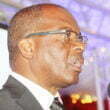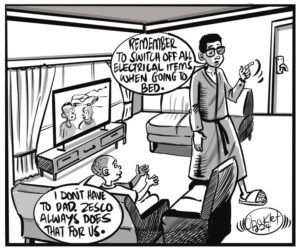ENERGY Minister Mathew Nkhuwa says water levels in the Kariba Dam are not rising as expected this rainy season because the facility is over-generating electricity from the little water available.
And Nkhuwa says power generation at Kafue Gorge Upper has increased to 700 megawatts.
Meanwhile, Nkhuwa disclosed that the country will continue receiving power from South Africa’s Eskom until the US$5 million that the power utility is still owing Zambia from the US$20 million paid prior to the first power importation in November is exhausted.
Updating Parliament on the country’s electricity generation, Wednesday, Nkhuwa said the Kariba Dam was not doing well and that government was expecting that the dam would only be filled up if the country had about three consecutive years of good rainfall.
“The water levels in Kariba are not rising as we expected. One of the reasons that water is not rising so much is that we are over-generating power on the Kariba, therefore, we are depleting the water. But also, the floods which we had in Eastern Province are after the Kariba Dam, therefore, water that goes into the Luangwa River actually ends up getting into Cabora Basa and without getting into the Kariba because that part of the country is on the lower side and sending the water into Mozambique. The Zambezi River starts from Mwinilunga and it goes through into Angola and comes back into Zambia,” Nkhuwa said.
“So, we are getting a bit of rainfall through Angola which is helping us a bit for it to rise. But I must also say that the water levels of the Kafue are far much better, even at the worst position, we only lost about 35 per cent generation. The Kafue upper which is supposed to produce 990 megawatts could now produce 600. But now we have gone up to about 700 megawatts. So the Kafue is doing well, meaning that the Itezhi-tezhi and the Kafue Upper and when the Kafue Lower comes in, we will be able to do much better. But the Kariba is not doing well and if the rainfall was good, we expect to fill up the Kariba in about three years. With three years of good rainfall, we can fill up the Kariba. But as for now, that Kariba catchment area is not well Mr Speaker.”
And responding to Bwana Mkubwa member of parliament Dr Jonas Chanda who wanted to find out what mechanism the ministry was using to give the right information to citizens on the electricity supply situation in the country to avoid misinformation, the minister said his ministry had instructed the Zambezi River Authority (ZRA) to be giving the nation updates fortnightly on water levels.
“Zambezi River Authority has been instructed to be giving a report to the nation every two weeks. So every fortnight, Zambezi River Authority do go to the radio, they do hold a press briefing in their offices to announce to the people the water levels and so on. Even further, there is a team of Zesco Public Relations department going round the country and sensitizing the people on the usage of electricity and the shortage of water in the Kariba. So both Zesco and Zambezi River Authority, with my ministry, are on top of things making sure that we sensitise the Zambian community,” Nkhuwa explained.
Meanwhile, giving an update on the load shedding status, he said power imports from Eskom would continue until the upfront money paid is exhausted.
“We began to import 300 megawatts of power from Eskom power company of South Africa in November, 2019 and this power import was a mitigation measure to cushion the impact of the power deficit on the economy. However, due to similar power challenges Zambia and the Republic of South Africa experienced during the same period, we only managed to import an average of 218 megawatts of non-thermal power daily from 22:00 hours to 05:00 hours until 3rd December, 2019 at a total cost of USD $15.5 million. You may recall that we had made an initial payment of USD $20 million prior to the importation. Therefore, this implies that we shall continue to get power from Eskom to exhaust the remaining balance,” Nkhuwa said.
He said the country’s power deficit currently stood at 810 megawatts while load-shedding for a minimum of 10 hours had been scheduled for different customer categories under distribution.
“In order to cushion this [power] deficit in the short term, the following projects and interventions are expected to be actualised: Kafue Gorge Lower is set to commission the first unit at 150 megawatts generation by end of quarter two, 2020; Lusiwasi upper is expected to be commissioned before end of quarter one, 2020; load-shedding for minimum of 10 hours is scheduled for different customer categories. Zero-rated taxes on solar equipment and gas stoves has been introduced. We have banned the use of incandescent bulbs. We have also developed a resource map for solar and we need to quicken and encourage investment in solar and wind. Mr Speaker, Zambia’s economy is largely dependent on the energy sector and electricity is the major source of energy. In this regard, government, through my ministry, will continue to implement measures that will accelerate the generation of electricity countrywide,” said Nkhuwa.












